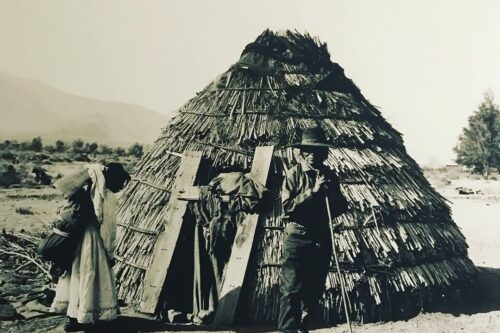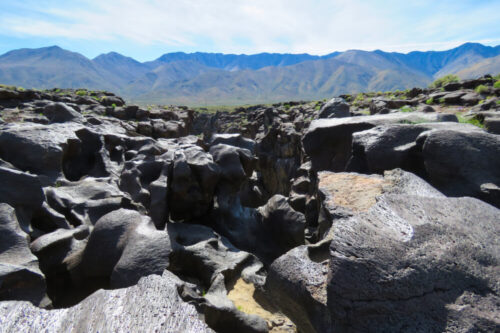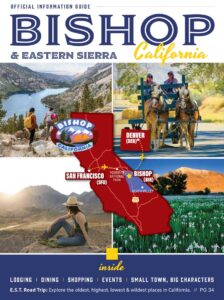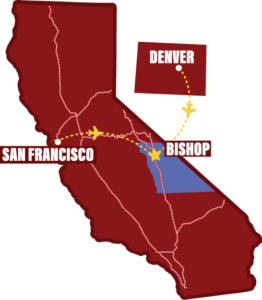California’s Bristlecone Pines, The Oldest Living Things on Earth
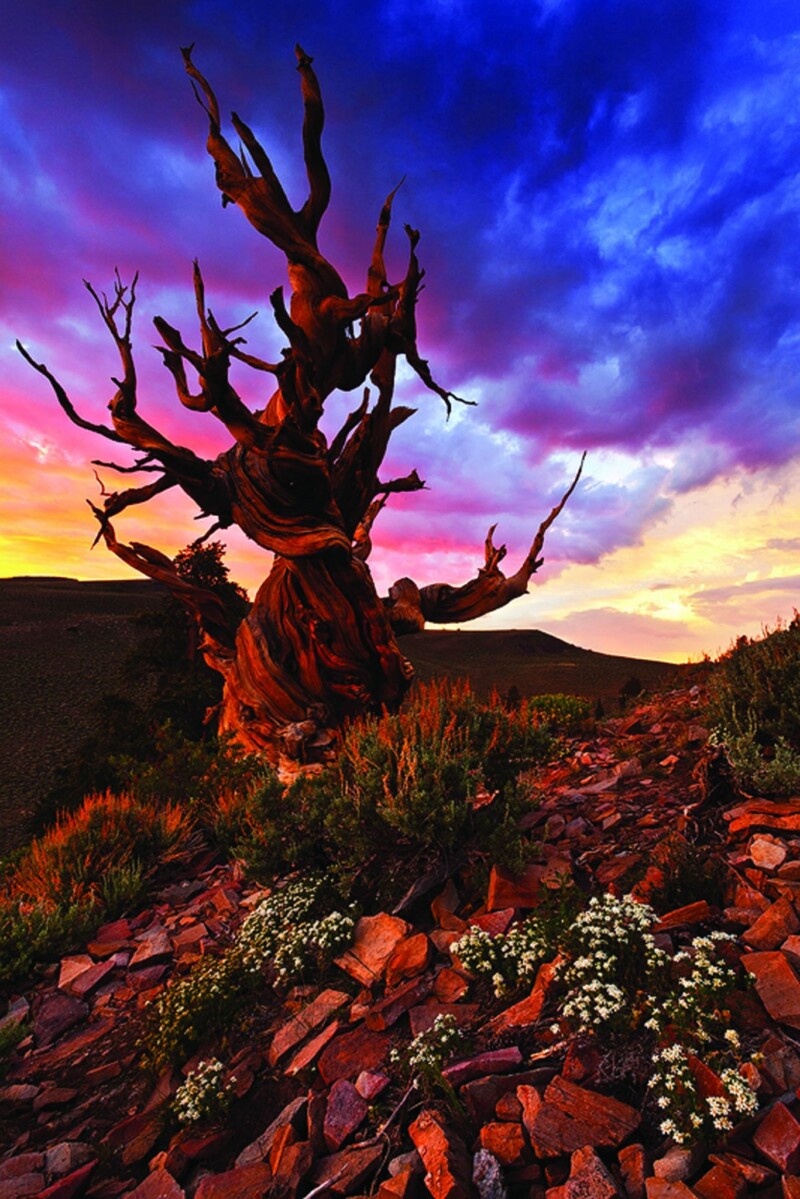
By Lee Foster
What are the oldest living things on earth? The current consensus is that they are trees, the bristlecone pines, which grow in the White Mountains of California, east from Bishop.
You can easily make their acquaintance and wander amidst a group of them. Visiting the bristlecone forest can be an inspiring trip. Some of these trees were already old when Socrates and Jesus Christ and Buddha were young.
California boasts some astonishing superlative facts of nature that appear to be indisputable.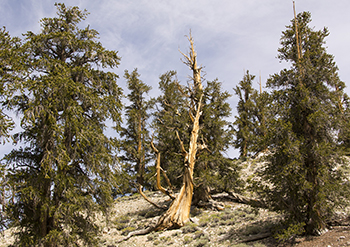 In California, you can meet the tallest, the most massive, and the oldest living things on earth. These three superlatives all happen to be trees. In a week trip you could crisscross the state to witness these three arboreal phenomena. You would need to put a few miles on your vehicle to include all three.
In California, you can meet the tallest, the most massive, and the oldest living things on earth. These three superlatives all happen to be trees. In a week trip you could crisscross the state to witness these three arboreal phenomena. You would need to put a few miles on your vehicle to include all three.
The tallest living earthly entities are the coast redwoods (Sequoia sempervirens) along the coast north from San Francisco. The tallest specimen flourishes at a hidden location in Redwood National and State Parks, near Orick, in the northwestern corner of the state.
The most massive of living things are the coast redwoods’ inland cousin (Sequoiadendron gigantea), located in pockets along the western foothills of the Sierra at midstate. The giant among these is the General Sherman tree in Sequoia National Park, east of Fresno.
The oldest living creatures on this planet are the bristlecone pines (Pinus longaeva), which survive in the White Mountains, a range east of Bishop. Bristlecone pines exist in other mountain settings in the Southwest, such as in Utah, but the California trees rank as the oldest, some more than 4,500 years, based on core samples that have been ring dated. Each ring measures a year of growth.
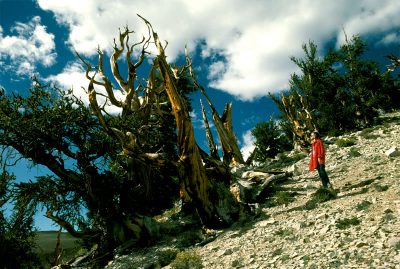
Their true age was not known until 1957. Only then was the startling discovery made that these trees in the White Mountains of eastern California were so old. The bristlecones were much older than even the 2,500-year-old ancients among the sequoia trees.
The surprising discovery was that some gnarled bristlecone pines ring dated to that early period. Moreover, scientists projected a 12,000-year chronology of weather patterns by matching the ring dates of living trees, dead trees, and downed wood. When there are time gaps, carbon dating can help.
The tenacious bristlecones silently maintain their vigil, living in the inhospitable conditions of the White Mountains. Moisture is minimal, locked up for long periods as snow. Wind constantly prunes adventuresome branches. Alkaline soils present the sparest nutrient base on which plant life can survive. Longevity of the twisted, ravaged bristlecones seems to stand as a metaphor of adaptation to adversity.
Communing with the bristlecones makes the passing fashions, the everyone-is-famous-for-15-minutes philosophy, the capsulized soundbite mentality of our modern time, seem fleeting indeed.
A ranger on duty at the Visitor Center can acquaint you with self-guided trails, such as the Discovery Trail and the Methuselah Trail. Take the mile-long Discovery Trail, which has plenty of photogenic trees and the tree named Pine Alpha, the first tree that Dr. Edmund Schulman determined was more than 4,000 years old. The Methuselah Trail is longer, taking several hours, and is recommended only to the extremely fit who can hike some distance in the rarefied air at a high altitude.
The Bristlecone forest is a special 28,000-acre preserve within Inyo National Forest. Transport yourself to this aerie from your support base along Highway 395 in Bishop or Mammoth Lakes. Both cities have plenty of lodging and dining options. The drive is about an hour from Bishop.
Consider the outing to the bristlecones as an assault on a peak, for you will rise to almost 10,000 feet above sea level. Make sure your car is in good condition. Go easy on the brakes for the long trip down the 8% grade. When hiking, be sure to pace yourself, taking only very short walks. You may need to acclimatize yourself for a day or more before hiking here strenuously.
Fill the tank with gasoline at Bishop, take plenty of protective clothes, and carry a gallon of water per person in your vehicle.
From Big Pine make the 23-mile drive to the bristlecones by starting east on Highway 168, also known as Westguard Pass Road. After two miles, stay left at the junction with Eureka Valley. Eleven miles later, a sign will direct you to the bristlecone pines. May-to-December are generally the snow-free months with good road access. Check with the rangers in advance to be safe.
You will pass through a forest of pinon pine and Utah juniper until you reach the nearly pure forest of bristlecones, starting at 9,500 feet. Within the Bristlecone Pine Forest, visit the Schulman Grove, at the south edge. Another grove, the Patriarch Grove, lies at the north end. Get precise details at the Visitor Center.
California is a special place. The state can boast of these arboreal natural wonders. Even the most dispassionate scientific observers support the notion that California offers you a visit to the tallest, most massive, and oldest living things on this planet.
** If You Go: Visit the Bristlecone Pines
Search for Schulman Grove Visitor Center in the Inyo National Forest comments on the USDA Forest Service website at http://www.fs.usda.gov/info.
Written by:
Guest Blogger
Our guest bloggers come from various locations and walks of life, but all share a common interest in this beautiful place.
